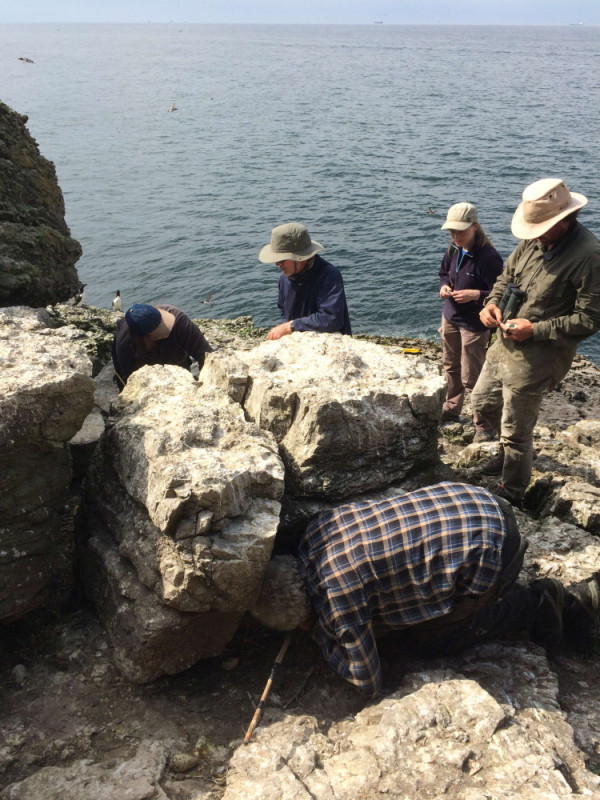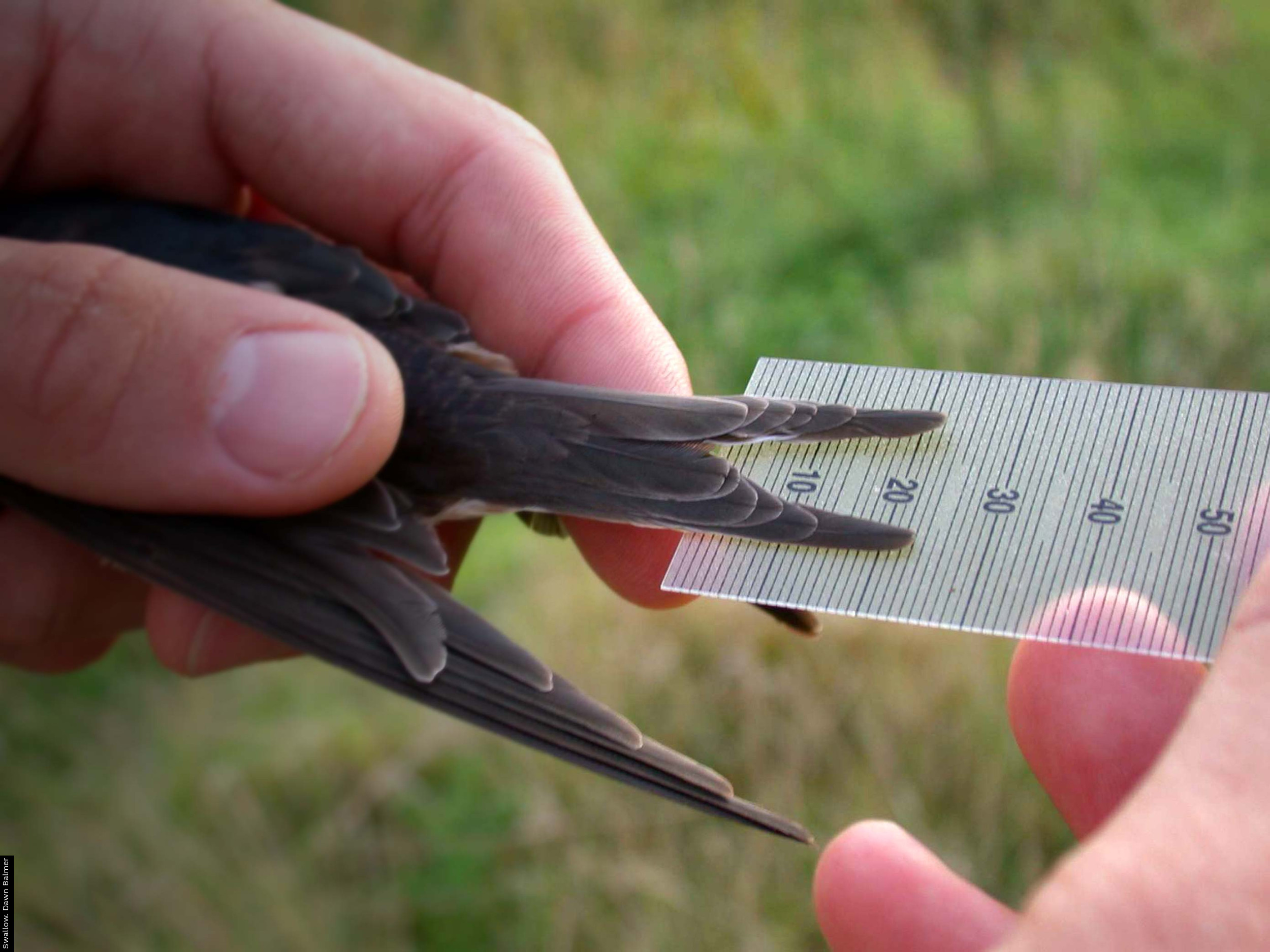Becoming a seabird ringer
It is likely that your first experience of ringing seabirds will be as part of a trip organised by more experienced ringers. You will probably need to be a registered ringer in order to take part in a seabird ringing trip (particularly for longer expeditions), partly to ensure you are covered by insurance but also because the fitting of bird rings to larger birds (as most seabirds are) can be tricky and some experience with fitting rings, even on smaller birds, would be advantageous. If you are not yet a registered ringer or are registered but haven’t done much other ringing, it is always worth asking what is required to join a trip.
Types of ringing permit
|
Type of permit |
What the permit allows |
|
T (trainee) |
Can only ring in the presence of a Trainer or a C- or A-permit holder with a helpers’ endorsement. |
|
C |
Can ring independently within the confines of the endorsements held, but still has a Trainer overseeing their activities. |
|
A |
Can ring independently within the confines of the endorsements held and is responsible for their own ringing activities. |
|
S (trainer) |
Can ring independently within the confines of the endorsements held and is responsible for their own ringing activities. Can formally train other ringers. |
How to register as a ringer
To register as a ringing trainee, you first need to find a Trainer who is willing to train you. All trainees have a formal Trainer, responsible for supervising or overseeing their ringing activities. It is worth noting here that few Trainers will be able to provide opportunities for ringing every species that you are interested in, but this is not a barrier to them taking you on as a trainee. You should be encouraged, with the support of your formal Trainer, to gain experience with other Trainers and ringing groups who can offer experiences your Trainer can’t. It is therefore not necessarily a restriction to accessing seabird ringing if your formal Trainer does not do any seabird ringing themselves. That said, if you are only interested in seabird ringing, and do not want to participate in any other types of ringing, you would be better trying to find a Trainer who specialises in, or at least does offer, training in ringing seabirds.
See also Ringing/Training to ring (FAQs) for more information.

Endorsements
Once your Trainer is satisfied that you have reached the standard required you can apply for one or more endorsements to become a C-permit holder, with or without restrictions (see below). Many ringers choose to undertake as many different types of ringing as they can get experience of, with the intention of applying for multiple endorsements to cover a variety of taxonomic groups and catching methods. This is not the only option though; you can choose to specialise in a particular aspect of ringing, such as seabirds, and only work towards obtaining endorsements in this area. It is even possible to get a C permit for just a single species or for a single species group.
If you want to obtain a C permit, or eventually an A permit, to ring seabirds of all species and ages, you would need to have full-grown and pullus endorsements for both Colony-nesting seabirds and Cliff-nesting seabirds. If you wanted to catch seabirds using mist nets, you would also require a mist-net endorsement for the species or species group that you wish to target. If, however, you only wanted to ring nestling Manx Shearwaters, you would just need a pullus endorsement for Colony-nesting seabirds, restricted to just Manx Shearwaters.
Some endorsements and methods require additional licensing – information relating to these can be found in ‘Considerations before starting on site, including health & safety’.
Finding an assessor
In order to acquire permit endorsements related to ringing seabirds, you will need to be assessed by an experienced ringer other than your own Trainer. If you, your Trainer or other members of your Ringing Group (if you are part of one) do not know any other Trainers that can provide this assessment, there are a number of other ways to find one. You can use the Find-a-Trainer map to find information on Trainers by location, along with details of the species and methods they can assess for or provide training for. If there are no suitable assessors or Trainers near to where you ring, you (or they) may have to travel to facilitate an assessment. If you cannot find a suitable option via the map, you could try asking on the Facebook ringers’ page or the BTO Ringers’ Forum (see here for how to access the Ringers’ Forum).
Obtaining a BTO ringing permit based on international ringing experience
You may be a ringer that holds a ringing permit issued by a different Ringing Scheme, with all the necessary skills and experience learned from ringing in a different country. Whilst it might seem logical to just issue you with the equivalent BTO ringing permit, this is not possible. Different Ringing Schemes work to different welfare standards and some techniques that are acceptable elsewhere might not be approved here. The BTO scheme also uses rings of different shapes and metals to other schemes, which have different fitting methods that require specific training. Ringers with permits from a foreign Ringing Scheme therefore have to apply to become a trainee in the same way as any other ringer; however, once you have found a Trainer and proved to them that you are capable of ringing to the standards required for a BTO permit, your Trainer can approve your C-permit application without you having to be a trainee for a year. You would still have to hold a C permit for a year before being able to apply for an A permit though.










Share this page